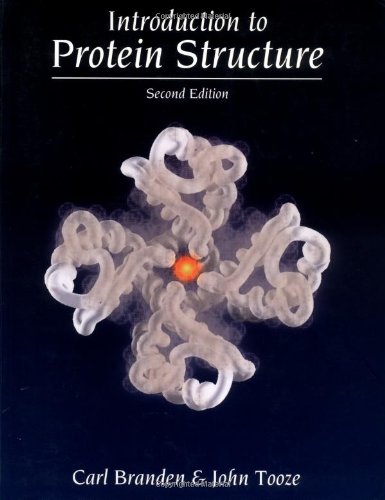Introduction to Protein Structure ebook download
Par culp jeffery le lundi, janvier 25 2016, 23:52 - Lien permanent
Introduction to Protein Structure by Carl Branden, John Tooze


Introduction to Protein Structure Carl Branden, John Tooze ebook
ISBN: 0815323050, 9780815323051
Format: djvu
Page: 415
Publisher: Taylor & Francis
Microbiology Immunology\Lab Manual and Workbook in Microbiology - J Morello.pdf. Protein structure alignment is a useful strategy for structural biology. Most of the alignment methods rely on structure comparison to identify structural, evolutionary, and functional relationships between proteins [1]. Microbiology Immunology\Introduction to Protein Structure - C Branden.pdf. Subsequent functional annotation shows that representatives of the ten .. Our analysis reveals a structural expansion of translation proteins immediately following the RNA world and well before the establishment of the DNA genome. The Figure shows proteins A and B which have 3 similar structure fragments. Proteins play an important role in living systems due to their unique structures that are large, flexible and complex (Schellekens 2004, Kumar et. [3] - A perspective on enzyme catalysis by Stephen Bankovic and Sharon Hammes-Schiffer [4] - RCSB protein database. Atomic force microscopy, optical tweezers, and other tools of nanotechnology have enabled induction and monitoring of large conformational changes in biomolecules. In new work, researchers have now described a strategy for creating a nearly unlimited range of microforms from crosslinked protein, including structures composed of multiple proteins. We have altered the introduction to both eliminate any confusion over the credit for this model and acknowledge that other models for the origin of the genetic system have been proposed. As an illustrative tool broadens the readership of the manuscript. Wider area of Biology, the introductory modules were designed to bring us all up to the same level regarding bioinformatics tools (e.g. [2] - Introduction to Protein Structure by Branden and Tooze. The Protein Crystallography Station at Los Alamos Neutron Science Center is a high-performance beamline that forms the core of a capability for neutron macromolecular structure and function determination. Since 1876, centrioles and centrosomes were shown to be involved in organizing fibrillar structures, including the spindle and mitotic asters within the cell as well as cilia and flagella in cells of many tissues [1]. Blast searches, phylogenetic tree tools, 3D protein structure software, and database concepts). Understanding the three-dimensional structures of DNA, RNA, and their complexes with proteins, drugs, and other ligands, is crucial for deciphering their diverse biological functions, and for allowing the rational design of therapeutics. Introduction to Nanotechnology.
Analysis of messy data epub